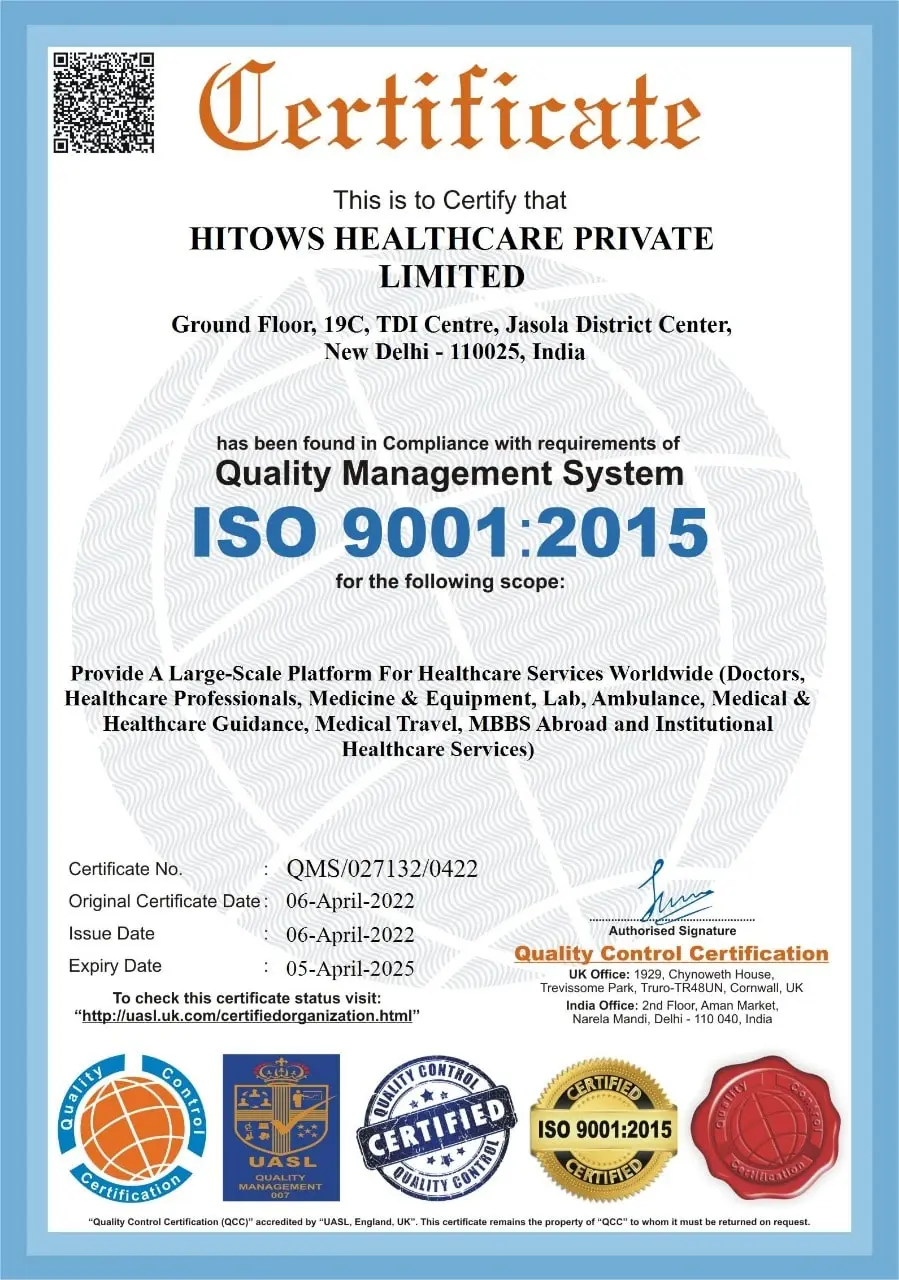Hydrocephalus Treatment cost in India
The cost of Hydrocephalus Treatment in India
ranges from USD 3000 to USD 7000
Procedure Description:
Hydrocephalus Treatment
Hydrocephalus can be treated using one of two surgical procedures.
1- Shunt: The most frequent therapy for hydrocephalus is the surgical implantation of a drainage system, known as a shunt. It is made up of a long, flexible tube with a valve that maintains fluid from the brain flowing in the correct direction and at the appropriate rate.
One end of the tubing is often put in one of the brain's ventricles. The tubing is then routed beneath the skin to a different portion of the body, such as the stomach or a heart chamber. This makes extra fluid more easily absorbed.
2- Endoscopic third ventriculostomy: Some people may require surgery known as an endoscopic third ventriculostomy. The surgeon examines the brain with a little video camera. The surgeon then creates a hole in the bottom of a ventricle. This allows cerebrospinal fluid to flow from the brain.
Disease Overview:
Hydrocephalus is the accumulation of fluid in ventricles deep within the brain. Excess fluid expands the ventricles, putting pressure on the brain.
Cerebrospinal fluid typically circulates through the ventricles, bathing the brain and spinal column. However, excessive cerebrospinal fluid pressure can damage brain structures and induce a variety of neurological symptoms.
Disease Signs and Symptoms:
The symptoms of hydrocephalus might change with age.
A - Infants: Common hydrocephalus symptoms in infants include:
1. Changes in the head
2- An unusually huge head.
3- Rapid growth of an infant's head.
4- A swollen or tense soft area on the top of the head.
5. Physical symptoms
6. Nausea and vomiting.
7. Sleepiness or sluggishness, sometimes known as lethargy.
8. Irritability.
9- Poor eating habits.
10- Seizures.
11- Eyes fixated downward, often known as sunsetting of the eyes.
12- Issues with muscle tone and strength.
B)- Toddlers and older children may exhibit the following symptoms:
1. Physical symptoms.
2. Headache.
3. Blurred or double vision.
4. Unusual eye motions.
5- Enlargement of a toddler's head.
6- Feeling sleepy or sluggish.
7- Nausea or vomiting.
8- Problems with equilibrium.
9- Poor coordination.
10- Poor appetite.
11- Loss of bladder control, or frequent urination.
C)- Behavioral and Cognitive Changes
1. Irritability.
2- Personality change.
3- A decline in school performance.
4- Delays or difficulties in previously acquired skills, such as walking or speaking.
D)- For young and middle-aged people, common symptoms include
1- headaches.
2- Slowness.
3. Loss of coordination or balance.
4- Loss of bladder control, or the need to urinate frequently.
5. Vision issues.
6- Decreased memory, focus, and other cognitive abilities that may impair job performance.
E)- Older individuals: Among persons 60 and older, the more prevalent symptoms of hydrocephalus include:
1. Loss of bladder control or the need to urinate frequently.
2. Memory loss.
3- Progressive loss of other cognitive or reasoning abilities.
4- Difficulty walking, sometimes known as shuffling or the sensation of having your feet stuck.
5- Poor coordination and balance.
Disease Causes:
Hydrocephalus is caused by an imbalance between the amount of cerebrospinal fluid produced and the amount absorbed by the bloodstream.
Too much cerebrospinal fluid in the ventricles can happen for the following reasons:
- Obstruction: A blockage can occur from one ventricle to another, or from the ventricles to other areas of the brain.
- Poor absorption: It is less typical to have trouble absorbing cerebrospinal fluid. This is commonly associated with inflammation of brain structures caused by disease or injury.
- Overproduction: Rarely, cerebrospinal fluid is produced faster than it can be absorbed.
Disease Diagnosis:
Hydrocephalus is usually diagnosed based on symptoms.
- A general physical examination.
- A neurological examination.
- Brain imaging testing.
1- Neurological exam: The type of neurological exam a person receives is determined by their age. A health care practitioner may ask questions and do simple tests to assess muscle condition, mobility, well-being, and sensory capacities.
2- Brain imaging: Imaging tests can be used to diagnose hydrocephalus. They can help identify the underlying reasons of symptoms. Imaging examinations include: ultrasound, MRI, and CT scan.
Disease Treatment:
Hydrocephalus can be treated using one of two surgical procedures.
1- Shunt: The most frequent therapy for hydrocephalus is the surgical implantation of a drainage system, known as a shunt. It is made up of a long, flexible tube with a valve that maintains fluid from the brain flowing in the correct direction and at the appropriate rate.
One end of the tubing is often put in one of the brain's ventricles. The tubing is then routed beneath the skin to a different portion of the body, such as the stomach or a heart chamber. This makes extra fluid more easily absorbed.
2- Endoscopic third ventriculostomy: Some people may require surgery known as an endoscopic third ventriculostomy. The surgeon examines the brain with a little video camera. The surgeon then creates a hole in the bottom of a ventricle. This allows cerebrospinal fluid to flow from the brain.
Country wise cost comparison for Hydrocephalus Treatment:
| Country | Cost |
|---|---|
| India | $3420 |
| Thailand | $5449 |
Treatment and Cost
22
Total Days
In Country
- 7 Day in Hospital
- 2 No. Travelers
- 15 Days Outside Hospital
Treatment cost starts from
$3800
Popular Hospital & Clinic
Featured Hospital
0 Hospitals
Related Packages
More Related Information
Some of the top rated hospitals are:
- Turkey
- Kolan International Hospital, Sisli
- Istinye University Bahcesehir Liv Hospital
- Istinye University Medical Park Gaziosmanpasa Hospital
- I.A.U VM Medical Park Florya Hospital
- Altinbas University Medical Park Bahcelievler Hospital
- Medical Park Antalya Hospital
- Medical Park Tarsus Hospital, Mersin
- Thailand




